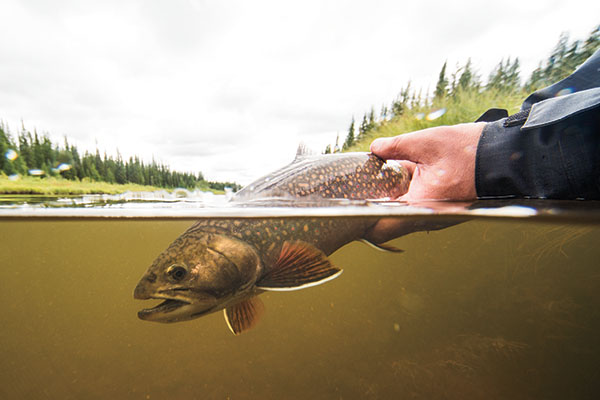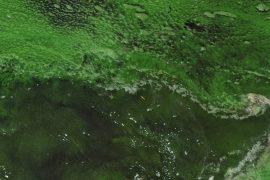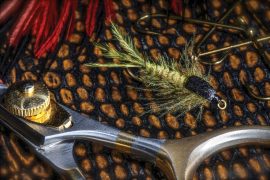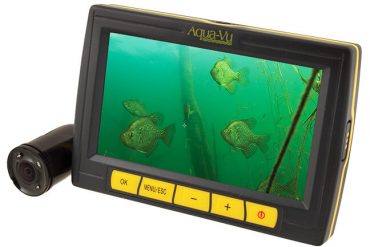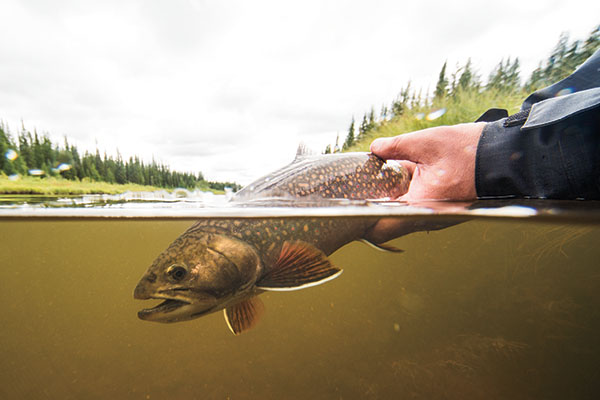
No one.” That was Stewart Webber’s response when I asked who else had fished the upper Menahook River, south of where it empties into Hudson Bay. Webber would know. He ran what is now the Nanuk Polar Bear Lodge (churchillwild.com), an off-the-grid hunting camp turned ecotourism lodge southeast of Churchill, Manitoba, for 12 years. He employed indigenous people, whose offspring still work there today. They also affirmed his assertion. No one had fished the Menahook, so we weren’t 100 percent sure what we’d catch.
The Menahook is in a remote corner of the subarctic, in an area thronged with polar bears and (we hoped) sea-run brook trout. Webber knew there were brook trout in the nearby Opoyastin, and he’d seen seals feeding at the mouth of the Menahook. Presumably they were feasting on something moving to and from the sea.
Most of us have caught brook trout in the small streams and beaver ponds of our youth, but a sea-run brook trout is another beast altogether—a potentially salmon-size fish that navigates the salt water to feed and grow, but uses fresh water to spawn. Sea-run trout like steelhead and brown trout are always a possibility wherever their home rivers run into the sea, but a real, honest-to-God sea-run brook trout is a seldom-seen prize in the angling world.
The nearest town—Churchill, Manitoba—is a quirky place. Revered as the “Polar Bear Capital of the World,” Churchill is surrounded by these bears year-round, and even threatened by them in the summer when the ice is gone and the bears are starving. Polar bears are so numerous here on Halloween that the residents have to corral this community of around 800 with their guns and trucks to keep the bears away, just to make trick-or-treating safe for the children. On my way to the Menahook, I landed in Churchill and then boarded a Cessna Caravan for the 90-minute trip to Nanuk Polar Bear Lodge.
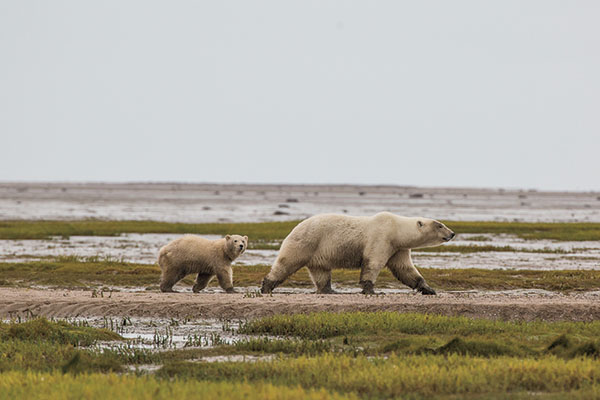
We landed on a gravel runway at the lodge and were soon off to the Opoyastin, where I landed a fish on my third cast. And fourth. And sixth. The fish in the Opoyastin were far bigger than what I’m used to at home in New England, but not the giants of Labrador and Patagonia either. Some displayed deep green hues, suggesting they’d not recently been in the salt. Others shone with a more chromatic tone, a transition that occurs when fish spend time in the Hudson Bay. When they travel upstream into fresh water, the amino acid guanine that has deposited in their scales, a byproduct of reverse osmosis, leaches out, allowing them to regain their green, red, and orange palate of colors.
Threatened Species
Brook trout (Salvelinus fontinalis) are mostly known as purely freshwater fish. However, an anadromous strain of sea-run brookies—also known as “salters”—exists in New England and Maritime Canada, with notable populations in Massachusetts and Maine. Historically, salters thrived as far south as Long Island and New Jersey’s Raritan River.
For salters to survive, they must not only endure sometimes challenging river conditions, but also thrive in the open ocean, to which they run after spending their juvenile years in the rivers. Their natural position in the ecosystem is fragile at best, and they aren’t the type of fish that can survive the additional burdens of mankind like dams, development, and harvest.
According to Dr. Andy Danylchuk, Ph.D., a Patagonia fish ambassador and an associate professor of fish conservation at The University of Massachusetts at Amherst, relatively little is known about how long these fish spend at sea, and exactly what their triggers are for return to the fresh water. Danylchuk believes that much of the migration is dictated by the “fitness” of individual fish, and that “water temperature and flow regimes will trigger movement back into natal streams, but it can also depend on whether fish have accumulated enough energy stores while out at sea to migrate upstream and spawn.”
In Hudson Bay, juvenile salters live in…

